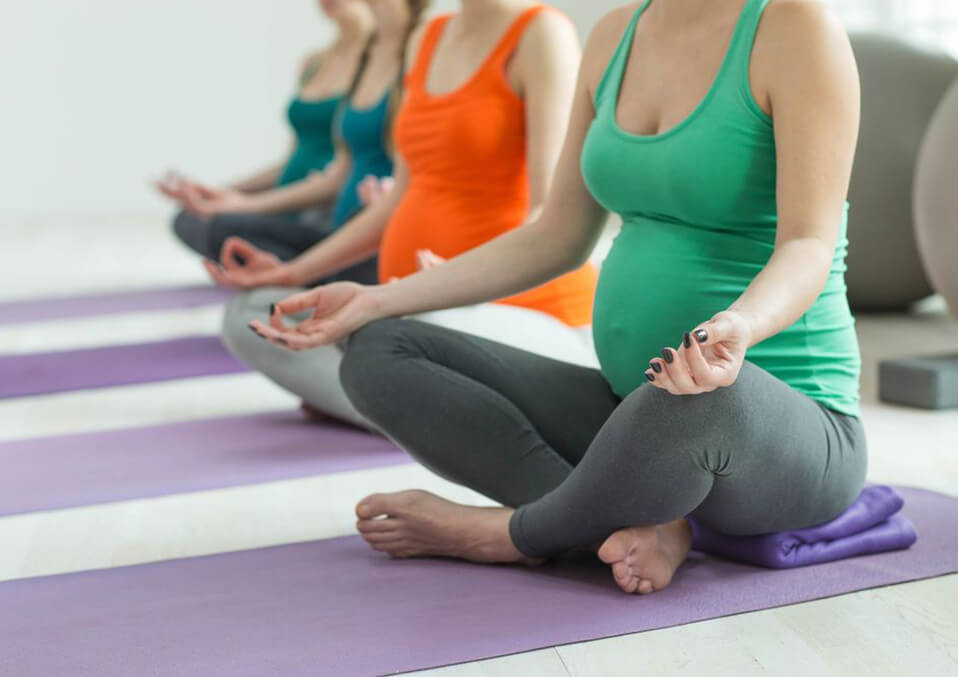
During pregnancy, yoga can be excellent as long as you take certain
precautions. Yoga helps you unwind and respire so that you can, in turn, adjust
to the physical demands of pregnancy, labor, childbirth, and parenthood.
It soothes both mind and body and relieves your body’s physical and emotional stress during pregnancy. Selecting a prenatal yoga session is also an excellent way to meet other mothers and board mutually on a trip.
The basics of yoga in pregnancy

Look for a class that is particular to pregnant females if you are new to yoga. When you do yoga for a while, inform your Yoga professor that you are pregnant.
You can be taught to demonstrate to you how to adapt to your positions. Concentrating on enhancing your yoga method while you are pregnant–it’s not time to try out fresh and advanced posts.
As you enter the middle months of pregnancy and your child develops, your center of gravity changes because your bump gets more extensive. It implies that you lose your equilibrium more probably, so be careful and slowly move when practicing yoga. For standing positions, use assistance if you need to–for example, a wall or a chair.
Read also: Healthy breakfast for pregnant women
There are many yoga styles, and if you choose to begin yoga in pregnancy, you will most probably aim towards softer, slower rhythms like Hatha. Avoid yoga in warm spaces like Bikram–you might overheat.
What do you need to consider when doing pregnancy yoga?

You may ask yourself; can a pregnant woman do yoga? Yes. A pregnant woman can perform yoga exercises as long as you know the correct positions and guidelines. Here are some suggested instructions:
Read also: The best ways to use apple cider vinegar to pregnancy
- If you attend a periodic yoga class, please let the teacher know that you are pregnant and which quarter you are in currently.
- Do not do any asanas on the back after the first quarter–blood flow to the uterus can decrease.
- Avoid excessively stretching the muscles, especially the abdomen. You are more vulnerable to stress, pulls, and other accidents right now because of the pregnancy hormone relaxes, which enables the uterus to grow.
- When the second trimester begins to change your center of gravity, make any standing poses with your heel to the wall or use a chair for assistance. It prevents losing your equilibrium and risks harming you or your child.
- Step off Bikram or “hot” yoga–work in an overheated space. According to research, overheating can threaten the health of your increasing child.
Read also: Working out while pregnant
- Bending forward, hang out of the hips. You must also lead the spinal cord from the top of the head to the tailbone. It enables the ribs to move more room, which facilitates breathing.
- Keep the pelvis in a neutral place during poses and tuck the tailbone down and into. It enables you to relax your buttocks and hip bending muscles. In turn, it can assist you to decrease or prevent sciatic back pain, which is a common adverse effect of pregnancy. It also helps avoid injury to your pelvis’ connective tissue.
- Place a towel or yoga belt behind your feet and hold both ends if you’re bending forward while sitting. Bend off the hips and raise the chest to prevent your abdomen from being compressed. If your stomach is too large for this move, try to place a rolled-down towel beneath your body. By doing so, it lifts your body and opens your legs around the body to allow more space for your stomach to move forward.
- Twist more from the shoulder and back than from the tail to prevent stress on your stomach when practicing twisting poses. Go as far as it feels comfortable.
What are the benefits of doing yoga exercises during pregnancy?

With a distinct look at the body of a pregnant woman, yoga may primarily operate in the fields that are most needed in a class aimed at pregnant females. Below are some of the most significant areas of interest, and prevalent pregnancy difficulties Yoga can relieve and enhance safety.
- Breathing isn’t something you often think about all day long. It’s a mechanical body function. You don’t have to remember to breathe, but you should prepare your body for the work. Breathing is a significant component of baby delivery; it enables the body to relax and bring your thoughts out of pain and strain.
- The pelvic floor is a muscle hammock which forms a bowl connected to the pelvis. This muscle promotes the essential organ of reproduction and digestion as well as the child during childbirth and plays a crucial role in the male and female sex. During pregnancy, it is particularly essential to practice pelvic floor muscle, as the significantly enhanced load currently supports it.
Read also: The best ways to use apple cider vinegar to pregnancy
- Yoga can also assist in relieving lower back pressure during the gravity shift. Tension starts to clear by tightening the upper leg muscles and the lower back. In combination with an exceptional abdominal job, your body will feel less pain during your pregnancy.
- Prenatal yoga can aid the accumulations of muscles and bone formations in the front and back of the hip to restore flexibility and comfort. It’s nice to get tissues ready to make birth simpler for mother and child.
Final words
Studies have shown that yoga during pregnancy can also enhance sleep, decreasing stress and anxiety, increasing muscle power, flexibility, and stamina required for birth. It can also reduce the danger of pre-term labor, hypertension induced by pregnancy, and the limitation of intrauterine development.
But don’t forget, after you have your child, yoga is also an ideal exercise. When you feel prepared to move around, it’s an excellent way to begin your body moving again by using soft yoga, relaxed breathing, and stretching.
Read also:
- How Many Weeks is a Normal Pregnancy
- Phantom Pregnancy, False Pregnancy or Pseudocyesis Guide?
- Stomach Pouch and How to Lose it During and After Pregnancy


